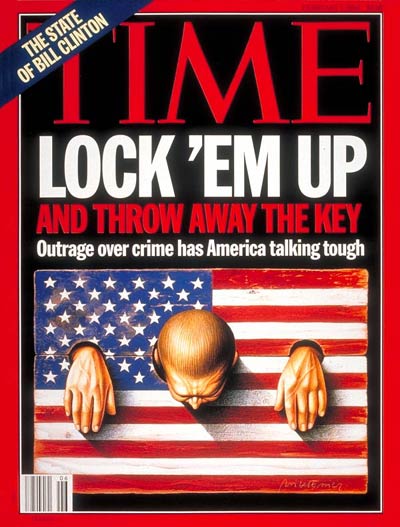
When the topic of America’s prison system comes up, it can often be overwhelming. There are numerous flaws, and each one seems more crucial than the next so that most often, we don’t even know where to begin. From the effects the American prison system has on society, to the prisoners themselves, it is obvious we have failed.
During the 1960’s, the nation’s prison population declined, but by the 70’s, urban crime rates began to rise, and as a result, politicians decided to get “tough on crime.” They began to focus on locking criminals up for long periods of time rather than rehabilitating them, and drug use was now considered a violation of the law rather than a sickness. Numerous presidents have since launched wars on drugs over the years, and the American prison population has risen dramatically with most people being incarcerated for nonviolent drug offenses.
As the prison-industrial-complex emerged, struggling communities that were falling apart from deindustrialization began to rely on prisons as a source of jobs and income. Between 1990 and 1995, more than 200 new prisons were created by both the states and the federal government. In 2008, some states spent more on their prison system than on higher education.
In the late nineteenth century, the labor union was able to successfully curtail convict labor as an abuse of human rights, however by the late twentieth-century, it had been revived. States such as Oregon “leased” prisoners out for $3 a day, and the state of California worked much the same way—a call to Trans World Airlines for a flight reservation was most likely answered by an inmate.
In a report by Smart Asset, American taxpayers are paying an estimated $74 billion dollars a year to keep prisons going. This is more than the GDP of 133 nations, and contrary to popular belief, giving inmates the death penalty (ones moral stance on the subject aside) costs more than imprisoning them for life.
As for prisoners, most emerge from their incarcerations with a lack of skills, and difficulty finding jobs. Most employers pass applicants with criminal records by, and according to a survey by the Center for Economic and Policy Research (CEPR), only 40% of employers would “definitely,” or “probably” hire applicants with a criminal record.
Provided below is a quick video that YouTube personality, Hank Green, has put together to shed some light on the American prison system, and the effects it has on inmates.
And finally, we’ll try to end this report on a somewhat lighter note with John Oliver’s informative take on the prison system:
Sources:
Attn Staff. Attn. Dec 21, 2014. (http://www.attn.com/stories/238/understand-americas-addiction-prison-3-minutes)
Foner, Eric (2014). Give Me Liberty: An American History. New York, NY: W.W. Norton & Company.
Wade, Betsy. The New York Times. Nov 9, 1997. (http://www.nytimes.com/1997/11/09/travel/practical-traveler-when-an-inmate-books-the-ticket.html)






